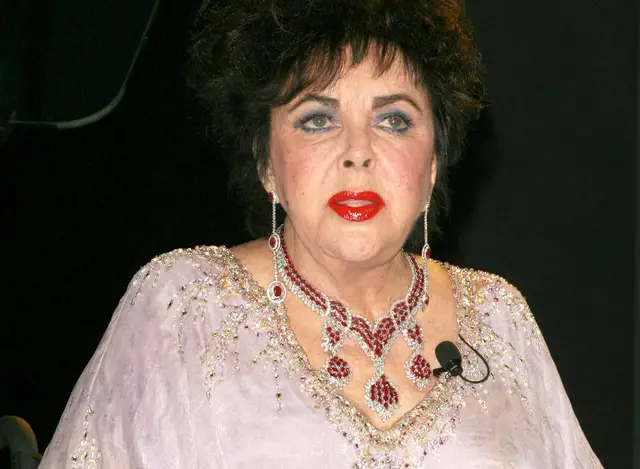Most people think they know Elizabeth Taylor’s story – the violet eyes, the diamonds, the eight marriages. But recently discovered audio tapes from the 1960s have revealed truths about the Hollywood icon that completely change how we see her legendary life. These 40 hours of never-before-heard recordings show a woman who was far more complex, vulnerable, and misunderstood than anyone imagined. The real Elizabeth Taylor was nothing like the tabloid version the world thought they knew.
Her childhood stardom hid a disturbing reality
While teenage Elizabeth Taylor played romantic leads opposite much older men, she had zero real-life experience with romance. Her first on-screen kiss in the 1947 film Cynthia actually happened a week before her first real kiss in real life. Even more shocking – she thought the movie kiss was better than the real thing. This reveals how completely sheltered her life was despite playing mature roles that sexualized her as a teenager.
Taylor’s mother or a tutor always accompanied her on movie sets, creating a bizarre bubble where she portrayed love stories while having no understanding of actual relationships. She fell in love with the idea of love through movies, not real experience. This disconnect between her on-screen persona and her protected reality set her up for disaster when she married Conrad Hilton Jr. at just 18 years old. She was completely unprepared for marriage, having barely known her husband before the wedding.
The Eddie Fisher marriage was actually terrifying
Everyone knows Elizabeth Taylor broke up America’s sweethearts Eddie Fisher and Debbie Reynolds, but the real story is much darker. Taylor didn’t set out to steal Fisher – she was grieving the sudden death of her beloved husband Mike Todd and desperately needed emotional support. Fisher, who had been Todd’s best friend, became her crutch during this vulnerable time. She quickly realized the relationship was a mistake but felt trapped by the public scandal.
The marriage became genuinely frightening when Fisher’s jealousy turned violent. In the lost tapes, Taylor describes Fisher pulling out a gun while she was trying to sleep, telling her “Don’t worry, I’m not going to shoot you. You’re much too pretty” while clearly threatening her life. This abusive behavior shows how the man portrayed as the victim in their love triangle was actually terrorizing his famous wife. Taylor began taking sleeping pills every night just to minimize time spent awake with him.
She witnessed both co-stars die on the same day
One of the most haunting coincidences in Hollywood history involves Elizabeth Taylor and her Giant co-stars Rock Hudson and James Dean. Taylor was present on the final day of both men’s lives, creating an eerie connection between the actress and tragedy. She saw James Dean on the fateful day in 1955 when he was killed in his car crash at just 24 years old. The timing was purely coincidental, but it marked the beginning of a pattern of loss that would follow Taylor throughout her life.
Thirty years later, Taylor snuck into the hospital to visit Rock Hudson on his deathbed as he died from AIDS complications. Hudson had been one of her closest friends, and his suffering motivated her to become a prominent AIDS activist. This strange coincidence of being with both Giant co-stars on their death days reflects the broader theme of trauma that ran through Taylor’s life. From her husband Mike Todd’s plane crash to Montgomery Clift’s disfiguring car accident after leaving her dinner party, Taylor experienced far more tragedy than most people realized.
Fame was actually torture for her
Despite being one of the most famous people in the world, Elizabeth Taylor genuinely hated being a celebrity. In the lost recordings, she admits regretting ever becoming “a public utility” and describes fame as “the bane of her existence.” While she appreciated acting and lived lavishly, the constant attention and scrutiny tortured her daily. She couldn’t go anywhere without massive crowds of paparazzi following her, often creating genuinely dangerous situations.
Taylor’s face appeared on magazine covers with consistently negative and salacious headlines that painted her as a diva and homewrecker. She saw her fame as infamy rather than something positive, feeling that the public had turned her into a cartoon character rather than seeing her as a real person. The woman who seemed to court publicity actually desperately wanted privacy and normalcy. This hatred of fame explains why she often made seemingly self-destructive choices – she had nothing left to lose in terms of public opinion.
Her Oscar win felt like an insult
Elizabeth Taylor’s first Academy Award for BUtterfield 8 should have been a career highlight, but she actually resented winning it. MGM had forced her to take the role despite her hatred of the script and its obvious parallels to her scandalous personal life. In the film, she played a prostitute who has a friendship with a man clearly in love with her, while his girlfriend was cast to look exactly like Debbie Reynolds – the woman Taylor had supposedly stolen Eddie Fisher from.
The studio essentially made Taylor act out the most negative assumptions about her real life, even casting her actual husband Eddie Fisher in the film. When she won the Oscar for this role, Taylor felt like the Academy was rewarding her for “being the biggest slut of the day” rather than recognizing her actual acting talent. This twisted situation shows how little control even major stars had over their careers and public image during Hollywood’s studio system era. The golden statue represented humiliation rather than triumph.
The million dollar Cleopatra salary was a joke gone wrong
Elizabeth Taylor became the first actor to earn $1 million for a single movie, but this groundbreaking payday happened almost by accident. She didn’t want to play Cleopatra and only agreed to negotiate as a way to get out of the project. Following advice from Burt Reynolds, she jokingly demanded $1 million, assuming 20th Century Fox would reject the outrageous request and cast someone else instead. To her surprise, they immediately agreed to pay her the equivalent of $10 million in today’s money.
This accidental negotiation victory proved Taylor was a shrewd businesswoman who understood her own value, even when she didn’t particularly want a role. The studio knew that despite her controversial reputation – or perhaps because of it – she sold movie tickets like no one else. Cleopatra also introduced her to Richard Burton, leading to the most famous love affair in Hollywood history. What started as a rejected project became both a financial triumph and the beginning of her greatest romance, showing how Taylor’s bold moves often led to unexpected outcomes.
She always played opposite closeted gay actors
A fascinating pattern emerges when looking at Elizabeth Taylor’s closest Hollywood friendships and romantic co-stars. She repeatedly played love interests to closeted gay actors who became her dearest friends in real life. Rock Hudson, Montgomery Clift, and Roddy McDowall all formed deep, lasting friendships with Taylor after working together on films where they portrayed her romantic partners. These relationships gave her some of the most genuine connections in her life.
During the filming of Giant, Rock Hudson confided in Taylor about his true feelings while trapped in a sham marriage. This honesty created a lifelong bond between them that lasted until Hudson’s death from AIDS. Taylor’s ability to create these authentic friendships with gay men in an era when homosexuality was completely hidden in Hollywood shows her capacity for genuine human connection beyond the tabloid drama. These friendships also explain her later passionate activism for AIDS research and LGBTQ+ rights, causes that were deeply personal rather than publicity stunts.
Her relationship with Richard Burton was more public than anyone realized
The Elizabeth Taylor and Richard Burton romance created the template for modern celebrity relationships, but even their most private moments were surprisingly public. Their affair during Cleopatra filming happened just as paparazzi culture was beginning, meaning their relationship developed entirely under media scrutiny. Previously, movie studios had controlled star publicity, but that system had collapsed, leaving Taylor and Burton exposed to unprecedented attention during their scandalous affair.
The couple’s fights were legendary – they regularly broke furniture, screamed at each other, and even came to physical blows in full view of cast, crew, and photographers. Burton once answered Taylor’s phone when her husband Eddie Fisher called, telling him “What do you think I’m doing here? Fucking your wife!” This level of public drama was shocking for the 1960s and established the template for modern celebrity relationships where private lives become public entertainment. Their love story played out like a soap opera because it essentially was one, watched by millions around the world.
She converted to Judaism for love, not publicity
After Mike Todd’s death in a plane crash, Elizabeth Taylor made a deeply personal decision that surprised many people. She converted to Judaism as a way of honoring her late husband’s memory and faith. This wasn’t a publicity stunt or casual decision – it was a genuine spiritual choice made during one of the most difficult periods of her life. Todd had been Jewish, and Taylor wanted to maintain that connection to him even after his death.
This conversion also took considerable courage in 1950s Hollywood, where antisemitism was still common and could damage careers. Taylor’s decision shows how her love for Todd went beyond their brief marriage and influenced major life decisions. She remained committed to her Jewish faith for the rest of her life, proving this wasn’t a temporary gesture but a permanent change. The conversion reveals Taylor’s capacity for deep, lasting love and her willingness to make significant personal sacrifices for the people she cared about most.
These revelations from Elizabeth Taylor’s lost tapes show a woman far more complex and vulnerable than her public image suggested. Behind the glamorous facade was someone who genuinely struggled with fame, made mistakes in love, and dealt with more tragedy than most people ever face. Her real story proves that even the most famous people are often completely misunderstood by the public who think they know them best.

